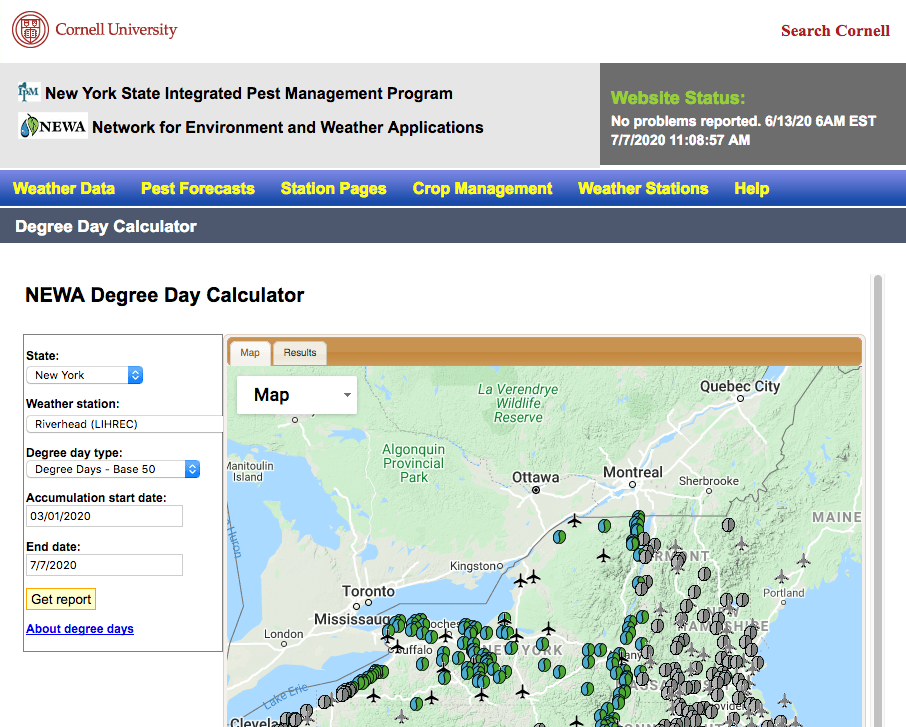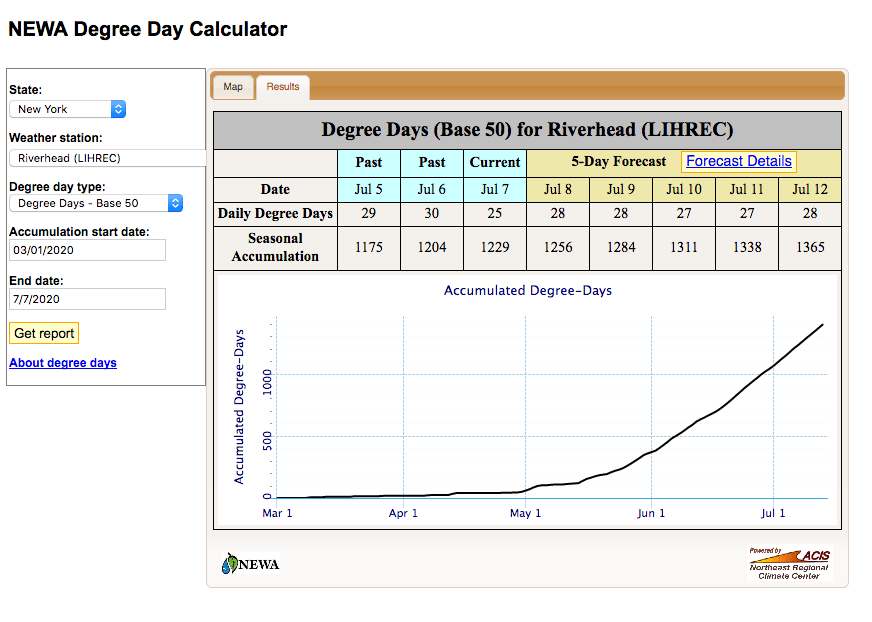I love getting questions so feel free to send them along. I have 2 today! What is GDD? And how long does the poison ivy toxin last.
What are those GDD numbers? (which is not the same as what are those gd numbers 😊 )
Growing Degree Days (GDD) is a measure of the amount of heat that has accumulated since a start date and over a particular average temperature. The basic idea is that insects and plants (but not so much diseases which often need a relative humidity or rainfall factor as well as temperature) develop based in part on temperature. Essentially things grow or develop faster when it is warmer. Since I have been picking berries lately, that’s a good example. Since it has been warm, they are ripening faster.
It isn’t a perfect system as the rate of development doesn’t continue to increase as temperature increases beyond a particular level and that level may depend on the species. Very high temperatures are often detrimental to growth. On the other end of the temperature spectrum, low temperatures don’t make the development go backwards.
However, the system works pretty well. We use a start date of March 1 as warm temps before that don’t seem to have much effect. We also use 50 as the base temperature as most insects don’t develop below that average temperature. (Different systems use different base temps) Here’s how you can calculate it yourself, if you are feeling adventurous.
Calculate the average temperature for the day. At the most basic that is the high plus the low divided by 2. Subtract 50. Negative answers are considered zero. Add that value up for each day starting March 1 and that gives you the GDD for the season.
Want to let someone else do the math? I use NEWA’s degree day calculator when I look them up for the emails I send.
http://newa.cornell.edu/index.php?page=degree-day-calculator Note that the Degree Day type says Base 50 and the Accumulation start date says 3/1/2020. The Base 50 seems to stay on my computer but I have to remember to change the start date every time. Choose the Weather station (this one is set at Riverhead LIHREC). You can choose from the map or look at the list under Station Pages – New York (then remember to check the start date again) Click Get report and you’ll get a graph and values for past, current and a 5-day forecast.
You can also get the GDD from the Station page but it doesn’t show the forecast
And how about that poison ivy question – How long does the poison ivy toxin – urushiol – last after the plants are removed from the tree.
That’s a tougher one. I found this answer on-line relative to composting poison ivy – which is quite different. He doesn’t cite his sources but does suggest he has found some – which is more than I did. I found a couple of uncited references for the fact that urushiol – which is an oil – can last on surfaces a long time. But it is an organic compound and it must break down somehow.
http://www.walterreeves.com/landscaping/poison-ivy-oil-how-long-is-it-potent/
I suspect – and this is merely a suspicion – that if the plant is just growing up through the tree but has not attached itself to the tree, the likelihood of there being large amounts of urushiol on the needles is low. It is the sap that is the issue and unless wounded, plants don’t usually lose much sap. That argues for removing it as carefully as possible. Is it possible that the sap tends to bead up and roll or wash off the waxy needles more than it would other surfaces? I hope so but don’t know.
If however, it has attached to the tree with rootlets, it is hard to remove without leaving some of those rootlets behind. They are more likely to contain some sap and urushiol and are potentially more likely to be a cause of poison ivy.
So, (you will see how cleverly I bring this around to the idea of scouting) I think that removing the poison ivy as soon and as carefully as possible will help. Scouting for it when it is small and easier to control will 1) help keep you and your crew from getting poison ivy and 2) not let it grow up into the tree and attach with rootlets.
This is another situation where a late summer application of glyphosate or triclopyr may work best because it will move the herbicice to the roots but cutting it out early, remembering (or even writing down!) where it was and treating any regrowth might be the way to go. It may still take several years to kill the poison ivy outright. Remember to check labels or NYSPAD https://www.dec.ny.gov/nyspad/products?0 to make sure you are getting a pesticide labeled for NY and read the label – long and complex as it may be!
Have a lovely day and stay cool!



